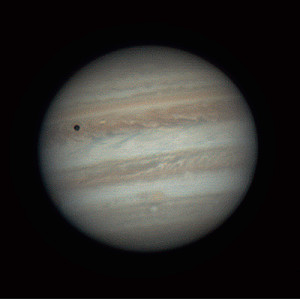Glossary term: Transit
Description: A transit occurs when a celestial body passes between another celestial body of larger angular size and the observer. From the point of view of the observer, the obscuring celestial body moves in front of the obscured body, blocking the view of a fraction of the surface of the obscured object. If the obscuring body that passes between the observer and the obscured object has a larger angular size than the latter, the event is referred to as an occultation rather than a transit. A transit viewed by one observer may not be seen by another observer looking at the same system from a different angle.
In the Solar System both Mercury and Venus can sometimes transit across the face of the Sun when viewed from Earth. Moons orbiting Solar System planets are commonly seen to transit across the face of their host planet when viewed from Earth.
Planets orbiting other stars (exoplanets) are often discovered when they transit their host star, blocking out a little of the star's light and making it appear to dim slightly when viewed from the observer's location. A planet orbiting a star will only transit when viewed from Earth if the plane of its orbit intersects with the line of sight from the Earth. As such searching for planets using the transit method can only ever detect a fraction of the planets in the Galaxy. Transits can also be used to estimate the size of an exoplanet.
Related Terms:
See this term in other languages
Term and definition status: This term and its definition have been approved by a research astronomer and a teacher
The OAE Multilingual Glossary is a project of the IAU Office of Astronomy for Education (OAE) in collaboration with the IAU Office of Astronomy Outreach (OAO). The terms and definitions were chosen, written and reviewed by a collective effort from the OAE, the OAE Centers and Nodes, the OAE National Astronomy Education Coordinators (NAECs) and other volunteers. You can find a full list of credits here. All glossary terms and their definitions are released under a Creative Commons CC BY-4.0 license and should be credited to "IAU OAE".
If you notice a factual error in this glossary definition then please get in touch.
Related Media
Jupiter, Io and its shadow, by Ralf Burkart, Germany
Credit: Ralf Burkart/IAU OAE
License: CC-BY-4.0 Creative Commons Attribution 4.0 International (CC BY 4.0) icons









